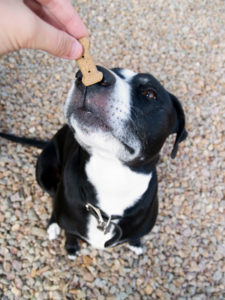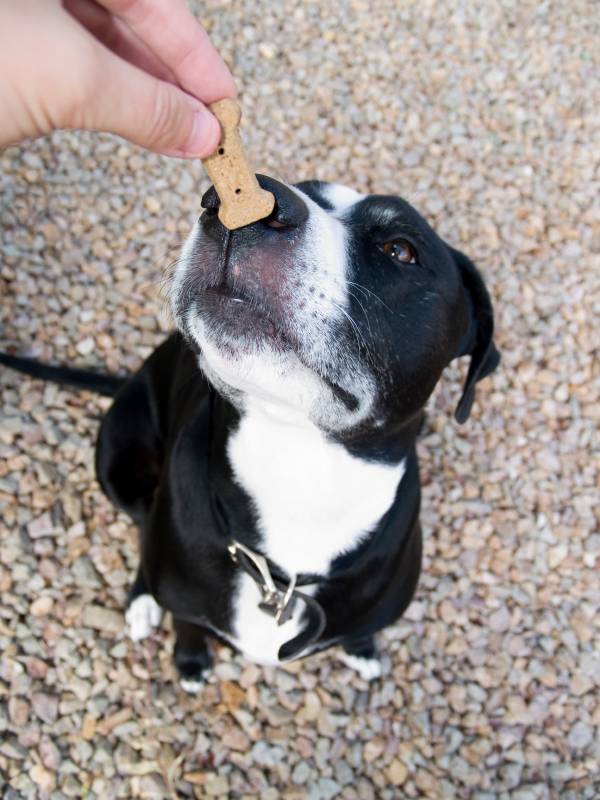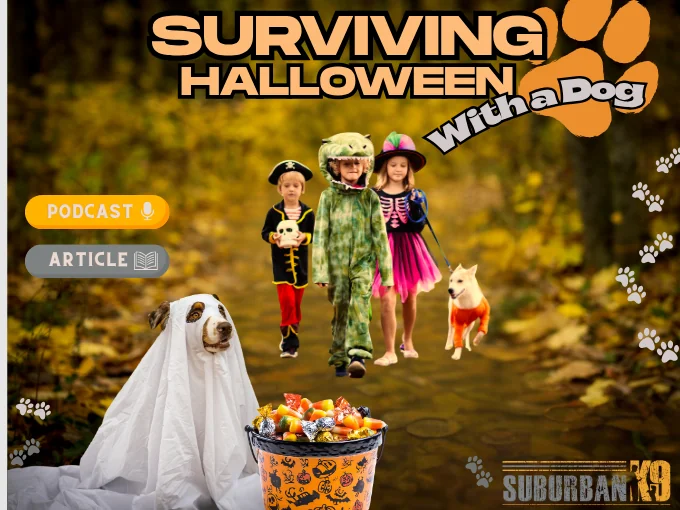 Training dogs with treats is a polarizing topic in the dog training world. Some trainers say that it is awful and others will tell you that if you don’t train with treats then you must be cruel. The truth about treat training a dog is that there is a time and place for it. The two main times that I will use food rewards to train a dog are when I am teaching commands to a very young puppy and when working with dogs that are having trouble coming out of their shells.
Training dogs with treats is a polarizing topic in the dog training world. Some trainers say that it is awful and others will tell you that if you don’t train with treats then you must be cruel. The truth about treat training a dog is that there is a time and place for it. The two main times that I will use food rewards to train a dog are when I am teaching commands to a very young puppy and when working with dogs that are having trouble coming out of their shells.
When training a young puppy with treats it is important that we don’t create a dog that enjoys food more than praise from his owner. With an eight week old puppy I will start the training process and use only verbal and physical praise at the beginning. Only if I see that he quickly becomes bored with training will I phase in food rewards to keep him engaged. As soon as the dog becomes proficient with his basic commands I will start a more structured leash training program without food rewards. The reasons for removing the food rewards are to ensure that the dog listens to me because he respects me, and to practice training with a calmer mindset. If we continue treat training as the dog ages the end result will be a dog that listens pretty well when the treat is the best option around, but will probably never be 100% reliable off leash. The reason for this is that there is always going to be a distraction that is more appealing than the treat. I use obedience as a way to gain respect from the dog and constant bribery is not a viable way to gain respect.
The second situation where I typically train with food rewards is when I am working with a dog that is having trouble coming out of his shell. This typically comes up with puppy-mill dogs or dogs from a hoarding situation that a rescue group sends me for training. These dogs don’t have a respect or dominance issue with humans, they have trouble accepting people as their friends. I use food with these dogs to make training around new people a fun and exciting experience. If these dogs see the cage or the car as a terrible place I will give them something good to associate positive feelings with that particular spot.
The thing that separates a great dog trainer from a mediocre trainer is identifying which approach to take with each dog. Most dog training is actually a very easy process that is based on repetition. The important thing to realize is that each dog needs a different approach. An excitable dog needs a training program that is very calm in order to help him relax. A timid dog might need an exciting training program to help build up his confidence. If dominance is an issue with the dog then it is important to ensure that we are training for respect. If you are training for fun (tricks and agility) then treat training is definitely the way to go since you are just playing a fun game with your dog. When training dogs always keep an open mind and make sure that your training fits your dog and your relationship will be much better as a result.
Matt Covey
Suburban K-9
Elgin, Il



